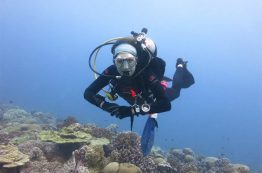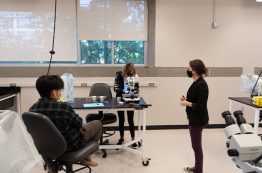Seafood is the world’s most highly traded food commodity, by value, and the product is hard to track from source to market. Reports of seafood mislabeling have increased over the past decade, but few studies have considered the overall environmental effects of this deceptive practice. A study by Arizona State University, the University of Washington and other institutions examined the impacts of seafood mislabeling on the marine environment, including population health, the effectiveness of fishery management and marine habitats and ecosystems.
Read more at UW News »Coral recovery during a prolonged heatwave offers new hope
Coral reefs serve important ecological functions, from providing habitat for countless species to protecting shorelines from erosion. Reef-dependent fisheries are also a vital source of food and income for hundreds of millions of people in tropical island nations where coral reefs are valued at $6.8 billion annually. The pressing concerns of climate change have placed the long-term health of the world’s coral reefs in jeopardy.
Read more at UW News »Winter is coming
Donning warm, cozy layers, winterizing gardens and swapping salads for soups — these are some of the things we humans do to prepare ourselves for winter. All over the world, species are also taking steps to prepare for the coming winter. From the extremely harsh conditions seen in polar regions to milder climates like the ones in the Pacific Northwest, we can see different species follow observable patterns to ensure their best chance of survival for the coming months.
Read more »Active learning during the COVID-19 pandemic
After news that summer, fall and eventually winter quarters are mostly to be conducted virtually, many instructors within the College of the Environment found themselves forced to write new lesson plans, while also becoming proficient with an array of new technology quickly. Not only did they have to teach, but in many cases they also had to be a tech wizard to facilitate remote lab work and deliver engaging lectures over a computer screen.
Read more »Warm oceans helped first human migration from Asia to North America
New research reveals significant changes to the circulation of the North Pacific and its impact on the initial migration of humans from Asia to North America. The international study, led by the University of St. Andrews in Scotland and published Dec. 9 in Science Advances, provides a new picture of the circulation and climate of the North Pacific at the end of the last ice age, with implications for early human migration.
Read more at UW News »





